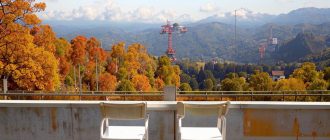The literal translation of Shinrin-yoku is “forest bath”. You won’t have to swim, but you’ll have to dive in. By turning off your smartphone and turning on your body’s resources. Or rather, they’ll turn on themselves if you do it right. That’s what the Japanese believe. Shinrin-yoku is their invention. What is it and how does it work?
What is shinrin-yoku
Japan has a cult of labor. That’s where the term “White Collar Syndrome” comes from. It’s about a person who works to the limit. He doesn’t sleep much and he stresses a lot. Sooner or later, the body fails.
One day, an alarming wave of such failures hit Japan. Labor productivity and birth rates plummeted. The government sounded the alarm. It was the early 1980s. That’s when the practice of shinrin-yoku – healing walks in the forest – began to develop. Today it is popular not only in Japan. It is a global wellness trend.
How it works
Man is a part of nature. When he is alone with it, self-healing mechanisms are activated. This is the basis for the theory and practice of forest therapy.
“Shinrin-yoku is a kind of bridge across the chasm separating us from our lost natural environment. The feeling of harmony with nature gives an impetus to healing: the nervous system begins to overload, the body and spirit grow stronger,” says Dr. Qing Li, author of the best-selling book Shinrin-yoku: The Japanese Art of Forest Bathing.
These are not just pretty words. The Japanese have backed them up with scientific research. Proven therapeutic effects. It turns out that shinrin-yoku:
- reduces cortisol (stress hormone);
- lowers blood pressure;
- strengthens blood vessels;
- improves immunity;
- activates the production of NK cells (these are killer cells that work against inflammation and tumors);
- has a positive effect on the psyche.
The effectiveness of Shinrin-yoku is also confirmed by psychologists. “Forest baths” are used to work through different emotions and states. Only correction of the methodology is required. Let’s take as an example a request that has become a trend today – increased anxiety.

psychologist
Who is especially prone to anxiety? City dwellers who are always running somewhere and can not really realize their true needs. In the woods, slowing down and grounding mode kicks in. That’s what they call mindfulness today.
Of course, running can be done here too… Sometimes it is even shown. For example, to work out strong tension, aggression. Even Nordic walking can be involved. It will allow you to bodily realize the stuck emotion.
In anxiety, the body also tenses up. The mind is restlessly searching for a solution and cycles on the problem. Physical tension is relieved by walking. And for mental tension there is a separate option – sensory perception. Those who don’t get out of deadline mode stop noticing the little things. But life is made up of them. In the forest, you smell the pine needles. You see the subtle nuances of leaf color. You listen to the rustle of the branches.
When you get home, you suddenly realize… You are drawn to eat an orange for some reason. The tea is delicious without sugar. You don’t want to turn on your smartphone at all. That’s what happens when you go off autopilot. Life becomes more colorful. It makes you less anxious. You become more aware of its causes. Many of them turn out to be insignificant.

To make it work: How to practice
- Find the right place. You should be comfortable.
- Turn off your smartphone.
- Do not aim for a sports record. Of course, finding the 10 thousand steps recommended by the trainer is a nice bonus. You should not strive for it on purpose. The task is to find your own pace. The body itself will choose the option. Average recommendations: 1.5-2 hours at a slow pace.
- Breathe slowly and deeply.
- Feel the forest. Remember the “bath” speech? You need to immerse yourself, connecting all the organs of perception: hearing, sight, smell, touch. Feel the frosty air through your nostrils. Touch a tree… You can even taste a spruce needle. But be careful – poisoning is not part of our plan.
- Don’t expect an instant effect. Enjoy the process. Here and now.
Masha: walking through the forest takes the tension out of the body. When concentrating on smells, sounds and pictures – from the mind, and with deeper breathing we work with both.






